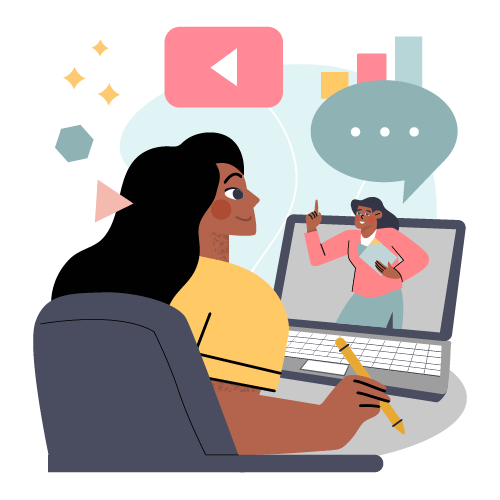Sandwiched between the buzzworthy Gen Z-ers and dependable Gen X-ers, millennials currently make up a significant portion of the workforce.
As the balancing act between generations constantly shifts and reconfigures, organizations are going to have to work harder than ever to train, engage, and keep that 30- and 40-something talent firmly in house. After a couple of years of extreme change and transition, millennials are becoming less transparent than they once were. Sure, a great break room and free lunch worked to lure millennial talent in 2015, but what is the modern millennial looking for?
We know that, as a rule, millennials are driven, but they’re also the least engaged of the currently working generations.
A Gallup poll found that 71 percent of millennials are not engaged at work, which means they are also the most likely to switch jobs when dissatisfied. Investing in training and development can help catch and keep millennial attention before a wandering eye leaves them searching for a new job, but it’s not as straightforward as a training module or a leadership conference. Millennials respond to a specific type of training more than their younger, more independent Gen Z coworkers.
By appealing to millennials’ social nature, tech savvy, and forward-thinking approach to their roles, you can deliver training that makes an impact on engagement levels and the ever-complicated calculation of training ROI.
How Do Millennials Learn?
Only a few years ago, the archetypal millennial could be maligned by their organizations and L&D pros. Millennials were looked at as a generation of workers that required more motivation than their older colleagues; as tech natives they had the skills, but some in the L&D industry felt millennials lacked the drive.
Of course, we know that’s not the whole story.
Throughout the COVID-19 pandemic, it was millennial workers that acted as pillars of a new way of working. Their tech savvy translated to seamless virtual workspaces and their social skills kept them afloat while working remotely. What may have seemed like weaknesses in the past, actually—for those organizations willing to recognize and handle the potential properly—became the very characteristics companies learned to lean upon.
Still, that doesn’t mean every organization has had the right approach when training millennials. Applying the same old training or trying something too new and unfamiliar can have the same effects for those born between 1980 and the late ‘90s: disengagement.
Striking the right balance of content, delivery, and social tools is what really grabs millennial attention. After all, they might have less focus than previous generations, but that doesn’t mean they want to forge ahead alone. The average millennial learner still enjoys collaboration and feedback, but doesn’t want a lot of hand-holding. Creating a millennial-first training strategy means understanding their sometimes paradoxical viewpoints and creating content that makes sense for their two most precious resources: time and attention.
5 Tips to Improve Millennial Training
Approaching workplace training as a one-size-fits-all scenario will undoubtedly leave you with a lot of frustrated, bored, and disengaged learners. With millennials making up most of the workplace, it makes sense that they should take priority when considering pain points like disengagement and indecision. Millennials are the generation that witnessed economic downfall firsthand; they might be more anxious than their confident Gen Z counterparts. This can often result in employees that are jumpy, quick to pivot, and ready to find something else at a moment’s notice.
The best way to train a millennial is to appeal to first gain their trust. Millennials want to see the long-term plans and how training will benefit them in the long run. Think about it as marketing your training: you need to lay the groundwork in building trust before you launch new content. Tell a story; get millennials emotionally invested; create a network of support. Once you’ve created a foundation of trust and engagement, you can deploy these millennial-approved methods for creating and delivering learning content.
1. Break It Down
While it’s true that Gen Z-ers are the ones most known for their blink-and-you’ll-miss-it attention span, millennials might be even more protective of their focus. While Gen Z-ers know that they can always scroll to something more interesting, millennials were brought up on social media sites like Facebook, Twitter, and Instagram. They’re experts at curating their “feeds,” whether on their phones or in their personal lives. Content needs to be broken into bite-sized, digestible pieces that is hyper-relevant to each learner. If your strategy doesn’t deliver, millennials will look elsewhere.
2. Try Videos
Depending on your definition of millennial, anywhere from 67 to 71 percent of the age group uses YouTube. That gives us useful insight into how millennials like to experience content: via video. And why not? Millennials are both efficient and picky about how they direct their focus and video is a quick and visual way to get the information they want. Utilizing video as part of your millennial workplace training strategy means tapping into a type of content we know they’re using anyway.
3. Make it Mobile
As the first generation of digital natives, millennials haven’t lived (much) in a world without mobile phones since the advent of the Blackberry back in the early 2000s. Making content deliverable, accessible, and compatible for mobile devices needs to be one of the core components of training millennials in the workplace. Think of their smartphones as a learning device they have in their pockets at all time: How would your strategy evolve if your users could access it 24/7?
4. Stay Social
The last couple of years have been hard on millennials, the generation that values collaboration more than any other. After losing traditional workplaces, millennials might feel disengaged from their teams and missing the social aspect of their jobs more than ever. Creating a collaborative learning environment can be tricky, especially if you’re still relying on a virtual workplace. Still, whether you’re meeting in the office or over Zoom, millennials still appreciate when training has a social aspect, whether it’s via chat rooms, video conferencing, forums, or even healthy competition among their colleagues.
5. Respect Expectations and Boundaries
It’s Gen Z that has grown up with smartphones permanently in their hands, answering calls and grinding any time, day or night. Millennials are more interested in their work/life balance and it’s important to respect their boundaries when creating and delivering content.
While millennials want access to information whenever they want, they prefer clear expectations set at the very start. Setting parameters around what they’ll learn, how long it’ll take, and why they’re learning it is step one. Step two is respecting those boundaries so millennials know exactly what to expect. If you tell them they’ll participate in a 30-minute social team building activity during work hours, don’t expect a 60-minute explainer video after hours to have the same engaging effect.
Want to learn more?
Engaging Millennials
You can develop the most cutting-edge millennial workplace training, but that doesn’t mean millennials will automatically respond to it. With only 29 percent of millennials feeling engaged at work, it’s clear that they aren’t currently investing their full time and attention in their organization.
It’s the generation most likely to switch jobs, so keeping millennial workers engaged and motivated helps keep their focus and see the big picture with your company. Not sure if your content is engaging enough? Use this checklist to make sure you’re doing enough.
When in doubt: Ask! Millennials are used to being heard, so they’re usually more than happy to help your organization understand where they can improve and increase engagement and retention rates. You might be surprised at what you realize is motivating a huge sector of the current workplace and utilize that insight to update your strategy and keep millennials top-of-mind when planning new L&D initiatives.
Don’t make the mistake of counting millennials out. While it’s true that Gen Z is beginning to flood the workplace with new ideas, extreme independence, and a flexible approach to how they work, millennials will remain major players well into 2030. Creating a learning and development strategy around your millennial employees helps you live up to their full potential now and gives them the tools to forge a new path for leadership in the future.






